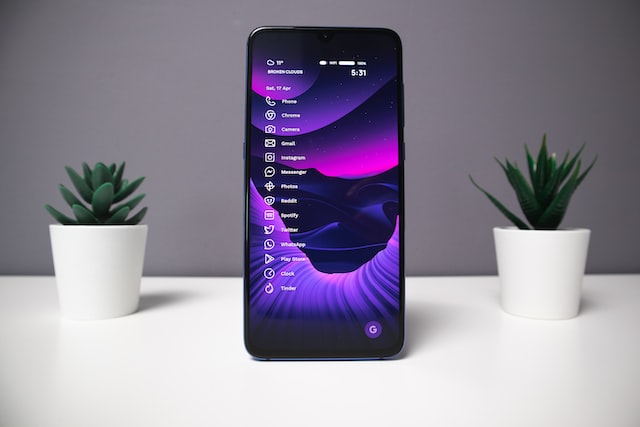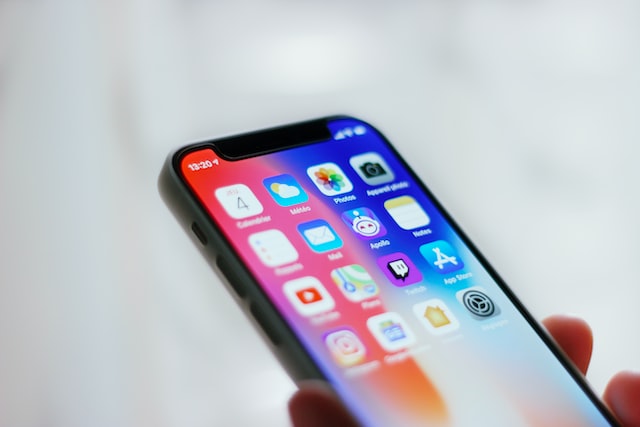Many will probably think of smartphones as a distraction, a reliance on technology, and poor communication skills when talking about school, college, or university. There is no doubt that there are times when students prefer to surf social media or play games rather than pay attention to their professors.
Nevertheless, smartphones can be a powerful tool for increasing students’ productivity if used correctly. So, if you’re considering operating your smartphone for study, here are the best activities you can do with it to boost your academic performance.

Downloading Apps For Full Control & Accessibility
Many schools have incorporated an online learning environment, which students can access via a website or an app on their mobile devices. They have integrated both to simplify the process. The best thing you can do is download the online learning apps on your phone immediately. These online learning environments provide access to everything you need for your education.
A typical online learning environment may have homework through apps or websites throughout the semester or trimester. You can typically find all learning resources, such as texts, book excerpts, and other resources. For instance, college-bound students can download the best SAT prep apps to help them prepare for the exam effectively. Typically, it will contain information about your courses.
You may choose to download apps like:
- Google Teams
- Google Docs
- Dropbox
- Google Drive
You will also find it helpful. These applications are similar, even if your school uses an alternative one. The above options allow students and professors to share files with Dropbox easily. Google Docs is a tool for submitting word documents quickly. With the drive, you can share files. And Teams serve mainly as communication channels for large groups.
Streaming Podcasts and Reading the News
Smartphones allow students to access media sources related to civics, social studies, English, psychology, math, foreign languages, and science. It may include journals, newspapers, online news sites, podcasts, and more, regardless of whether they are voracious learners, struggling learners, or students needing additional exposure. While you can access this information on a desktop, smartphones enable you to learn anywhere, anytime.
Do you take the bus to school? Make notes using a notepad app like Evernote about the article on volcanic lakes you were supposed to summarize for the assignment. Do you need to practice your French? Take your softball practice to the next level with slow French podcasts! A smartphone can be handy for foreign language students who listen to native speakers often and read newspapers and magazines to access culture.
Researching Through Various Channels
The more space you have on your phone, the more browsers you can install. The internet is an endless landscape of possibilities through these browsers. You can use your smartphone for study to access credible sites to help you research your various subjects. For instance, the JSTOR database, Google Scholar database, etc., are accessible through browsers.
The internet contains valuable information, so don’t limit yourself to a few websites. Just make sure your referencing is peer-reviewed and legitimate. For this reason, most college professors discourage students from using news articles as information sources but recommend using actual thesis papers and academic papers.
Typically, they consider these references credible. Teachers sometimes use videos to reinforce information, but it always depends on the context. In any case, you should have a browser ready for research on your smartphone. You will get more mixed results if you use multiple search engines. Besides Google, there are:
- Startpage, and
- DuckDuckGo.
These search engines are private, as opposed to Google. All can enhance your browsing experience.

Scanning QR Codes
Using QR codes, you can use your smartphone for study to instantly access videos, audio files, website contact information, or any brief text. Nowadays, most phones have pre-installed QR codes, but if it doesn’t, numerous free QR code reader apps are available for students whose phones do not.
Students love QR codes, even though they take a bit more time and effort to create. It can also generate an answer key next to each question so that students can check their work. Additionally, the codes may include links to websites or educational YouTube clips.
The QR code scavenger hunt is one of the favorite use of QR codes for many: Students solve riddles or answer questions using QR codes. A QR code will guide them to the next question if they choose the correct answer. It combines both technology and game-like elements to engage students.
Conclusion
Smartphones allow students to access the world anytime, anywhere. It is both beautiful and a little frightening to realize this fact. The smartphone, however, is a necessity in the modern world. All students must use their smartphones to study productively. With the help of the internet, they can easily access conceptual explanations by experts, perform research for projects, and connect with their school’s learning management system.
Hey welcome to my blog . I am a modern women who love to share any tips on lifestyle, health, travel. Hope you join me in this journey!

Speak Your Mind